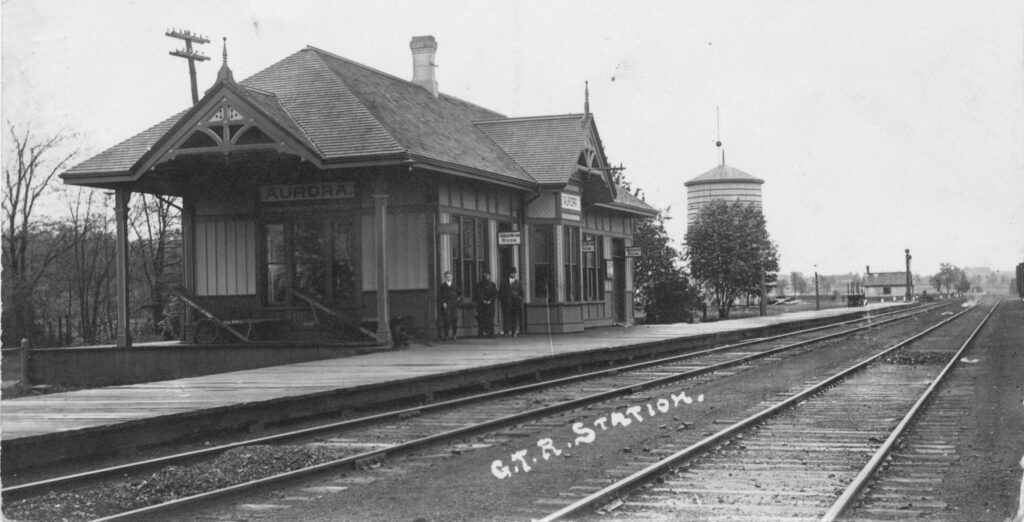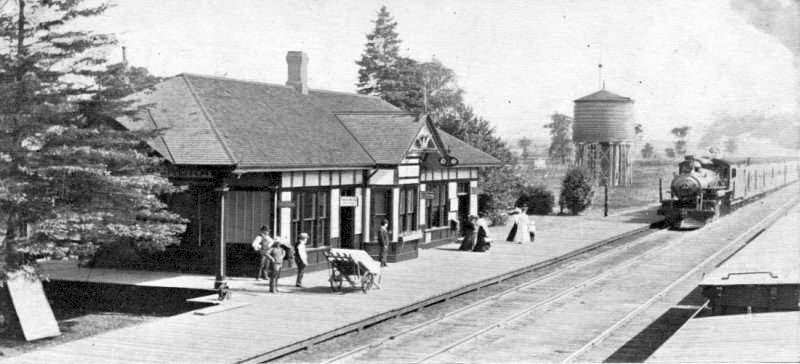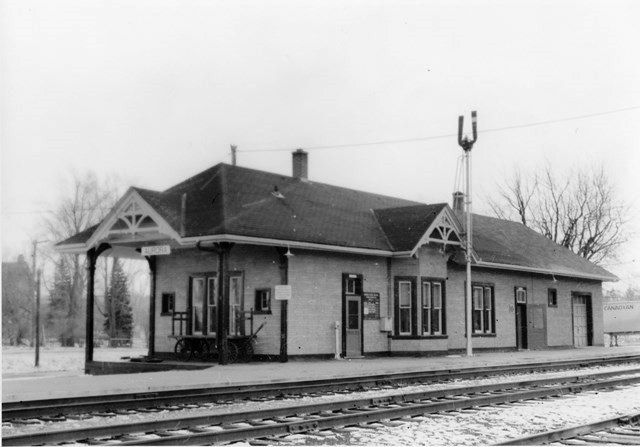Summary
Aurora Station was built in 1853 by the Ontario, Simcoe & Huron Railway while construction was progressing northward from Toronto. While no photos of this station are known to exist, it would have been a small wooden structure with a pitched roof and a board-and-batten exterior. A surviving example of this design exists in King City, albeit with some later modifications. On May 16th, 1853, the first train from Toronto arrived in Aurora. Service was extended beyond Aurora the following month. In 1858, the OS&H was reorganized as the Northern Railway of Canada. After a special train carrying the Prince of Wales stopped in Aurora to pick up fuel in 1860, the station was commended for the way it was decorated for the occasion. In June 1879, the Northern Railway merged with the Hamilton & North-Western Railway to form the Northern & North Western Railway. Just under ten years later in 1888, the Northern & North Western itself was acquired by the much larger Grand Trunk Railway.
By 1893, a total of eight passenger trains were stopping at Aurora Station each day. On July 24th, 1895, an arsonist would unsuccessfully attempt to burn down the freight shed located adjacent to the station. A second attempt on August 19th of the same year was successful in destroying the building. The Grand Trunk built a new station at Aurora in 1896 and converted the original station into a freight shed. The new station was not received well by local residents who found it unsuitable for the community’s needs. Enough pressure was put on the railway that Aurora Station was replaced once more in 1900, this time using far more attractive design features commonly found on other Grand Trunk stations built during this period. It was a rectangular board-and-batten structure with a hipped roof and gables at its north, south, and west side. A bay window faced the tracks, allowing the station agent to see clearly in both directions from their office. By 1913, service to Aurora reached its peak of fourteen trains per day.
The Grand Trunk Railway encountered financial difficulties during the early 20th century, culminating in its nationalization and subsequent absorption into Canadian National in 1923. Eight trains were still stopping at Aurora by 1945, although the popularization of automobiles and air travel in the postwar era would contribute to a decline in subsequent years. This would only be exacerbated by the completion of Highway 400 in 1952, which ran roughly parallel with the railway and served many of the same communities. Service to Aurora ended altogether at some point between 1955 and 1960, putting the station in a precarious position. A singular departure returned by 1963, though it would only stop at Aurora if flagged down. Luckily, the station building was designated a provincial heritage building in 1971 to protect it from possible demolition. Regular service to Aurora resumed in 1972 with Canadian National’s introduction of a Toronto to Barrie commuter service, colloquially referred to as the “Barrie Bullet”. All service to Aurora was assumed by VIA Rail upon its formation in 1977, and this remained the case until it was further supplanted by GO Transit in 1982. The station was given federal protection under the Heritage Railway Stations Protection Act in 1990. After VIA’s transcontinental service was rerouted away from Aurora in 1992, GO Transit became the only railway to serve it. The 1900 Grand Trunk station remains in active use by GO Transit to this day.
Condensed Station Info:
| Location: | Served By: | Current State: | Date Built: | Date Demolished: |
| Wellington Street East | NRC/NNW (1853 – 1888) GTR (1888 – 1923) CNR (1923 – 1977) VIA (1977 – 1992) GO Transit (1982 – Present) | Demolished (First & Second) Preserved (Third) | 1853 (First) 1896 (Second) 1900 (Third) | 1896 (First) 1900 (Second) N/A (Third) |




